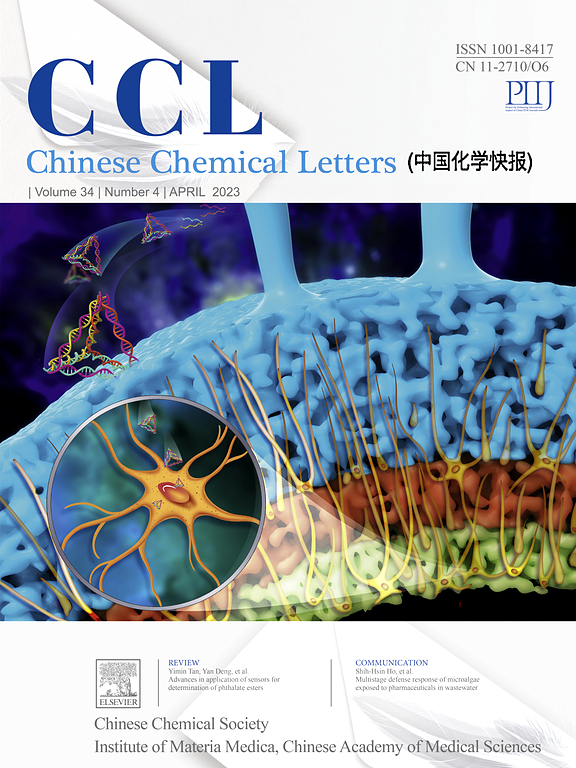钾改性氮化碳光催化 N-磺酰基酮亚胺的氨基化反应
IF 9.4
1区 化学
Q1 CHEMISTRY, MULTIDISCIPLINARY
引用次数: 0
摘要
为有机合成开发创新性和可持续的催化策略是推动材料科学和化学工程发展的一个关键方面。本研究提出了一种利用掺钾的类氮化石墨(g-C3N4)框架进行 N-磺酰基酮亚胺氨基化的新催化方法。该方法不仅提高了 g-C3N4 的催化效率并拓宽了其光吸收光谱,还显著降低了电子-空穴对的重组率,从而提高了反应产率和选择性。重要的是,我们的方法促进了氨基酰化 N-杂环的合成,扩大了钾改性 g-C3N4 在光催化有机合成中的应用。本研究的一项显著成就是通过异相光催化技术前所未有地生成了氨基甲酰基,这种基在反应后很容易被回收利用。这一进展凸显了掺钾 g-C3N4(即 K-CN)作为一种先进的异相光催化剂生成复杂有机化合物的能力。本文章由计算机程序翻译,如有差异,请以英文原文为准。

Potassium-modified carbon nitride photocatalyzed-aminoacylation of N‑sulfonyl ketimines
The development of innovative and sustainable catalytic strategies for organic synthesis is a pivotal aspect of advancing material science and chemical engineering. This research presents a new catalytic method for the aminoacylation of N‑sulfonyl ketimines by utilizing a potassium-doped graphite-like carbon nitride (g-C3N4) framework. This method not only enhances the catalytic efficiency and broadens the light absorption spectrum of g-C3N4 but also significantly reduces the recombination rate of electron-hole pairs, thereby increasing the reaction yield and selectivity. Importantly, our approach facilitates the synthesis of aminoacylated N-heterocycles, expanding the applicability of potassium-modified g-C3N4 in photocatalytic organic synthesis. A notable accomplishment of this study is the unprecedented generation of carbamoyl radicals via heterogeneous photocatalysis, which can be easily recycled after reaction. This advancement highlights the capability of potassium-doped g-C3N4 (namely K-CN) as an advanced heterogeneous photocatalyst for the formation of complex organic compounds.
求助全文
通过发布文献求助,成功后即可免费获取论文全文。
去求助
来源期刊

Chinese Chemical Letters
化学-化学综合
CiteScore
14.10
自引率
15.40%
发文量
8969
审稿时长
1.6 months
期刊介绍:
Chinese Chemical Letters (CCL) (ISSN 1001-8417) was founded in July 1990. The journal publishes preliminary accounts in the whole field of chemistry, including inorganic chemistry, organic chemistry, analytical chemistry, physical chemistry, polymer chemistry, applied chemistry, etc.Chinese Chemical Letters does not accept articles previously published or scheduled to be published. To verify originality, your article may be checked by the originality detection service CrossCheck.
 求助内容:
求助内容: 应助结果提醒方式:
应助结果提醒方式:


